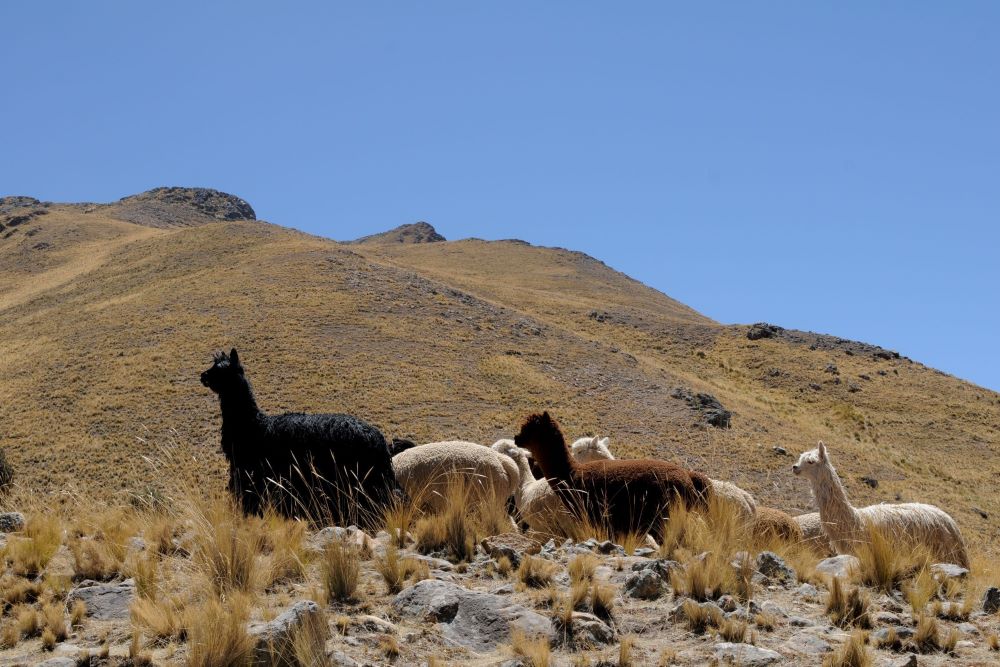
Andean alpacas - the cornerstone of the Inca civilization
Alpacas are mammals and belong to the camelid family. The same tribe includes dromedaries, two-humped camels, llamas, vicuñas and guanacos.
Vicunas and alpacas are the cornerstone of the Inca civilization
The story of alpacas is believed to have started 2.5 million years ago, when the common ancestor of vicuña and guanaco migrated from North America to South America to the area where the Inca civilization later lived. Today, that region spans the regions of Peru, Bolivia, southern Ecuador, northern Chile, and western Argentina. The wild ancestor of the alpaca, the vicuña, and the wild ancestor of the llama, the guanaco, still inhabit the Andes.
According to research, the alpaca was bred from the vicuña into a wool-producing animal around 6,000 years ago, thus being one of the first domestic and production animals domesticated by humans. The llama, on the other hand, was bred from the guanaco to be used as a breeding stock, e.g. due to its coarser wool fiber and its larger size than alpaca.
Both animals played an important role in the Inca Empire. The Incas depended on the food, woolen material and help in transporting goods that they provided. In addition, alpaca fibers and other textiles were used like money today to acquire other necessary things.
These animals were also part of religious ceremonies and were sacrificed to mother earth and the gods to ensure a favorable harvest, harvest season or other luck. Vicunjos were even worshiped and products made from their wool could only be used by royalty, under threat of death. Vikunja wool was and still is one of the most prestigious and valuable fibers in the world.
Danger of extinction and other challenges

At the beginning of the 16th century, after the Spanish explorers discovered gold, silver and other precious metal deposits in South America, they did not understand the value of alpaca fiber, but in their quest for conquest slaughtered 90% of the camel population at that time. Fortunately, however, when the natives fled to the mountains, some of the alpacas were spared and the valuable animals were saved.
In the 19th century, with industrialization, the clothing industry and alpaca fiber became popular again. Scarves and other products were made from it, which were especially appreciated by the upper social classes of Europe. Later in the 20th century, this led to alpaca fiber being bought at a price per kilo. So the breeders naturally wanted to maximize their income and therefore started breeding individuals with lower wool quality, whose wool is heavier than fine and high quality wool.
This, in turn, made high-quality wool even rarer. Only in the last few decades has Peru been able to repair the damage caused by this era to the quality of the alpaca fiber, by doing precise processing work. Like our partner Pacomarca .
The vicuña has been pacified today, as it was hunted almost to extinction for its wool in the early 20th century. By the 1960s, poachers had killed all but 10,000 individuals. Currently, there are estimated to be around 350,000 vicuñas.
Export ban from the country
Even in the 19th century, alpacas and especially llamas were transported to zoos, but in 1843 Peru enacted a law that prohibited the export of animals. It wasn't until the 1980s that Peru lifted the export ban and alpacas began to be exported not only to North America, but also to the so-called To alpaca countries of the New World, such as Australia and Europe. The first alpacas came to Finland via Sweden in 2002.
Photos: Art-Dept, MICHELL & CIA
Sources:
Hoffman.E. & Fowler.ME (1995). The Alpaca Book -Management, Medicine, Biology and Fiber. Clay Press Inc. Herald, California.
Safley, M. (2001). Alpacas: Synthesis of a Miracle. Michael Safley.
Suomen llama and alpaca association. referenced 9/2/2021. Alpaca - Finnish alpaca and llama association (alpaca.fi)





































